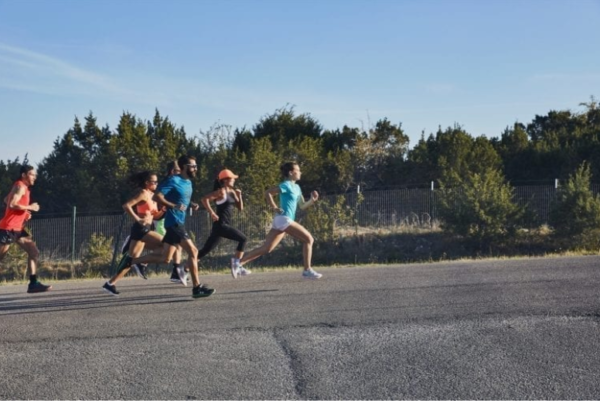Training for a marathon involves a lot of different things. Running, of course. But also strength training, smart fueling and, of course, recovery. Just as important as the actual mileage, making the time to take care of your body during months of pounding pavement can be a total gamechanger.
From simple things, like making time for adequate sleep and hydrating appropriately — to more conscious efforts like slipping into compression boots or using a percussive therapy device, the types of recovery athletes can indulge in is almost endless. Here, experts offer easy recovery practices to focus on during your training, especially as race day draws near.
Ah, a classic. Foam rolling is great because you can get a lot of benefits similar to a massage, without having to shell out $100+ for an hour-long session. The catch is you obviously have to put in the work. Aside from helping with muscle recovery, foam rolling can also improve speed, power, strength and agility when used in conjunction with a dynamic warmup, according to a study published in the Journal of Athletic Training.
This category also encompasses popular new percussive therapy devices, like Theragun and Hypervolt. An upside to these handheld tools is benefits similar to foam rolling without necessarily having to sprawl out upside down on the living room floor.
How many times have you been told to take the time before a run to warm up, yet still don’t actually do it? (We know, we’ve lost count, too.) Stretching both before and after a run can make a major difference in how your muscles handle the effort. In the aftermath, researchers have found 6–10 minutes of active recovery stretching reveals consistent positive effects on performance.
One of the greatest recovery tools you own is your bed. “As a runner, you must focus on getting good rest,” says Greg McMillan, online running coach and exercise scientist. “A regular bedtime as well as a good pre-sleep routine can really help you get more and better sleep.”
Set a time to go to bed every night and religiously stick with it, especially in the last 8–10 weeks before a big race, he suggests.
- READ MORE > YOUR ULTIMATE POST-RACE (OR TRAINING) RECOVERY TIPS
The right food can make a huge difference in how you feel before, during, and after the run. “It provides energy and rebuilds the body’s tissues that are damaged from training. So it goes without saying that you can use nutrition to enhance recovery,” says McMillian.
Some small ways to prioritize your recovery by what you eat? First, integrate both carbs and protein into your post-workout meals. Roughly 30 minutes after each hard or long workout, aim to consume a 3:1 ratio of carbs-to-protein, according to the American Council on Exercise (ACE).
Additionally, this is where hydration comes into play. Water makes up about 60% of your overall body weight, which means it’s really important to keep up with your sips. Generally, an adult female needs about 2.2 liters (2.3 quarts) per day, while an adult male needs about 3 liters (3.2 quarts). This amount increases with activity, as you’ll be losing some of that water through sweat.
Though it may not be at the top of your post-run to-do list, gauge for adequate hydration by monitoring the color of your urine (it should be pale yellow).
There’s a reason athletic training rooms have dedicated spaces for ice baths: They work. “You want your legs to be fresh for race day, so a 10–20-minute ice bath after every key workout in the last eight-or-so weeks before the big day,” suggests McMillian.
To make the perfect bath, grab a big bag of ice from your grocery store, dump it in and fill the tub. The tub doesn’t necessarily need to be chock full of the frozen cubes (aka don’t go overboard).









